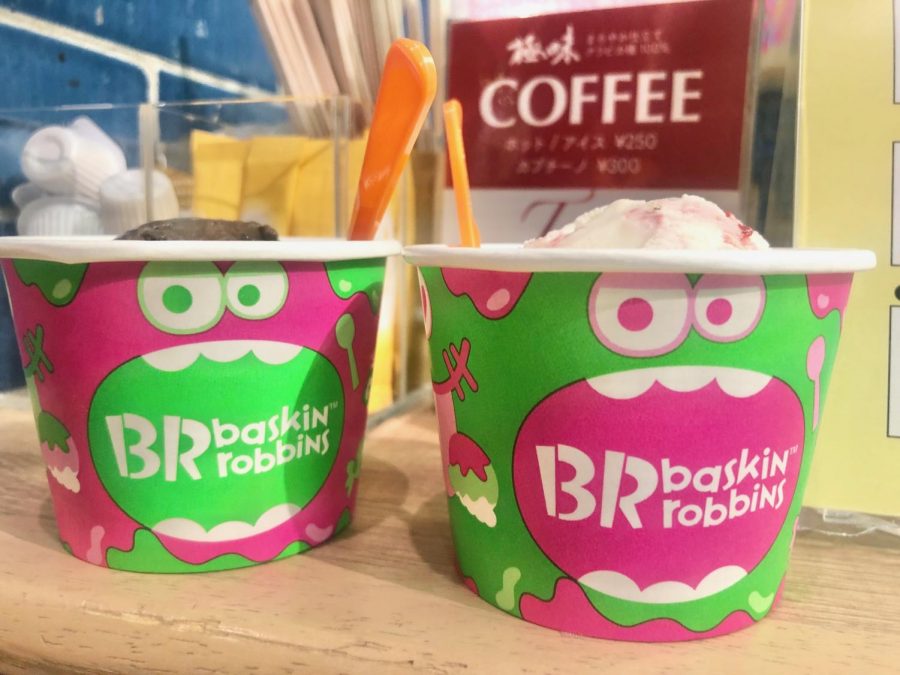Mae H
Baskin Robbins: Start to be eco-friendly with a cup of ice cream
Baskin Robbins
Recently, the Environmental Science class sent out a survey to all Sacred Heart high schoolers about their go-to cafes and stores in Hiroo. After Family Mart, Starbucks, and Hao Cha, Baskin Robbins came in fourth in the survey.
Since Baskin Robbins has been selling ice cream for more than 70 years with the slogan, “let the customers enjoy different flavors every day, every month”, we had high expectations for their eco-consciousness.
We began investigating the types of products they use and where the ice creams are shipped from. The ice creams Baskin Robbins sells are made in their own factories in Shizuoka and Hyogo prefectures, and the milk they use is made in Hokkaido. This earned Baskin Robbins 3 out of 4 points for using locally produced products and avoiding overseas shipping, which avoids water pollution and decreases the carbon footprint of the ice creams.
However, Baskin Robbins’ energy use, packaging, and shop decorations are not as sustainable as those from other stores. They use massive amounts of electricity in the store for various utilities such as the freezer, electronic menu board, and lights. While staying in the store we noticed that although the air conditioner was set to 23°C, the room temperature was 27°C. Their automatic doors were kept open, which was letting cold air escape and hot and humid air entering the room. Since all of these factors result in high electricity costs and an increase in carbon footprint, improvements should be made to the shop. This gave 1.5 out of 4 points for the store’s electricity use.
Along with high energy use, Baskin Robbins uses lots of plastic for packaging and decorations. To advertise their store, their cups and plastic spoons have their logo printed, which promotes their store but also overuses plastic, which could lead to pollution. However, they provide the option for customers to have their ice cream in a cone or a plastic cup. Choosing cones would lead to less use of plastic. For using unnecessary plastics, the store got 1.5 out of 4 points.
As Baskin Robbins is one of the most popular ice cream shops in Japan, they often collaborate with popular characters from Pokemon, Disney, and Universal Studio. During the collaboration seasons, the store provides small gifts such as plastic folders, toys, and stickers promoting the limited ice cream flavors. This is highly beneficial to the store and makes customers happy but also creates lots of unrecyclable plastic, which is why the shop scored 1 out of 4 points.
Outside of their shop, there is a trash can that is separated into burnable and unburnable sections, which enables customers to sort their trash properly. However, the signs to sort the trash are the unclear and old signs to sort and we saw that a lot of customers were combining two different typed of trash. Therefore, the shop scored 2.5 out of 4 for having a trash can but lost marks for their unclear signs.

Although Baskin Robbins has a few sustainable factors that benefit the shop, customers, and the environment, the overall score we gave them on the eco-friendly shop test was 11.5 out of 24 points. This was lower than most of the other shops we have evaluated. By raising awareness and practicing eco-friendly habits, such as changing their plastic cups and spoons to paper cups and wooden spoons, the store could have a huge positive impact on the environment.
